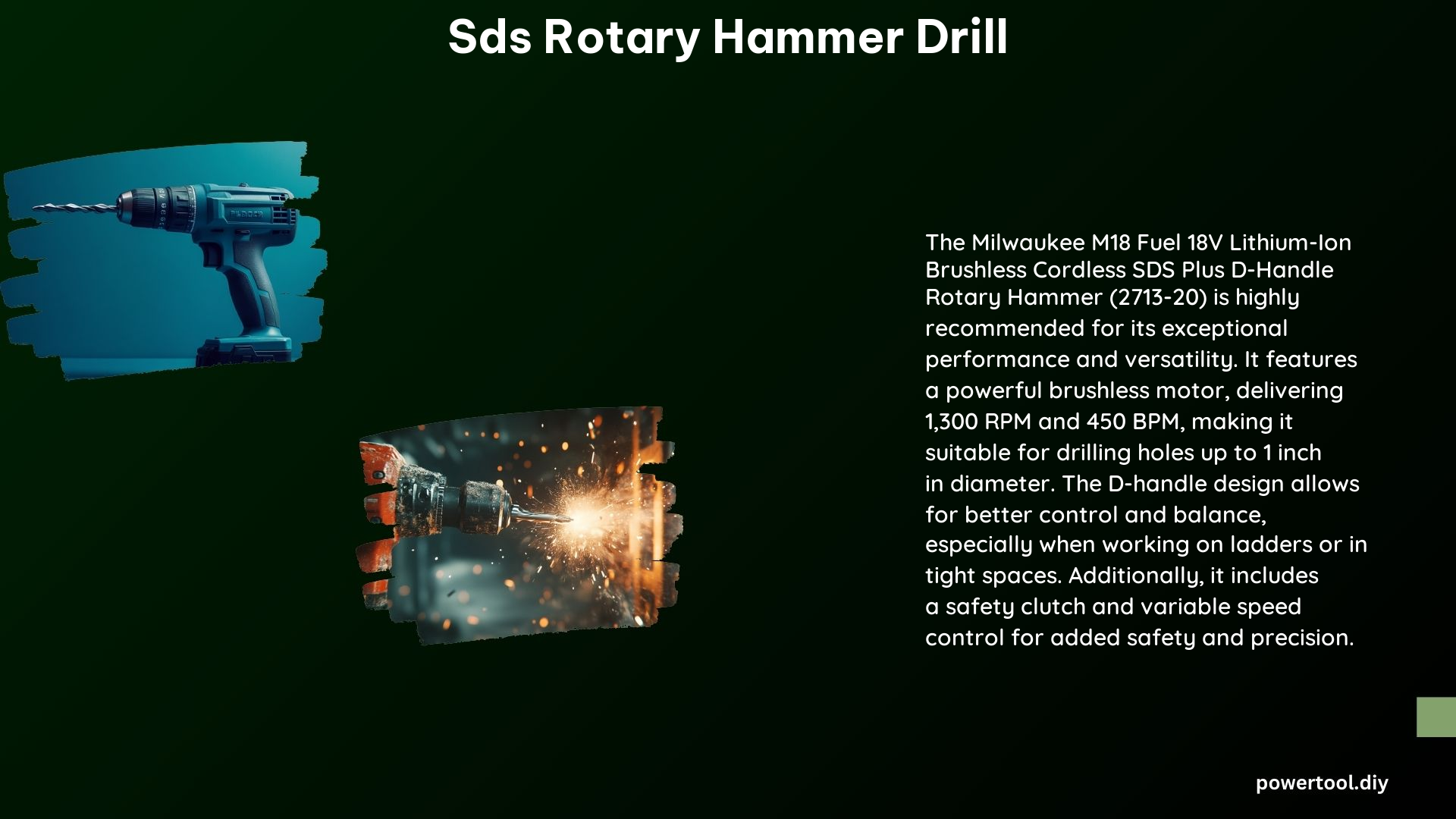SDS rotary hammer drills are powerful tools used for a wide range of heavy-duty drilling and demolition tasks, from concrete and masonry to stone and brick. These specialized drills offer unparalleled performance and versatility, making them an essential tool for professionals and DIY enthusiasts alike. In this comprehensive guide, we’ll dive deep into the world of SDS rotary hammer drills, exploring the key differences between SDS Plus and SDS Max, the various modes and features, and the technical specifications that can help you choose the right tool for your needs.
Understanding the Difference Between SDS Plus and SDS Max
The primary distinction between SDS Plus and SDS Max drill bits lies in their size and compatibility with different rotary hammer drill models.
SDS Plus
- Size: Smaller in diameter, typically used for drilling holes up to 1 inch in diameter.
- Applications: Suitable for lighter-duty tasks, such as drilling into concrete, masonry, and stone.
- Compatibility: Compatible with smaller, more compact rotary hammer drills, often used by electricians and for general-purpose drilling.
- Typical Power Range: 5-8 Amps or 18-24 Volts
SDS Max
- Size: Larger in diameter, capable of drilling holes up to 2 inches in diameter.
- Applications: Suitable for heavy-duty tasks, such as demolition, breaking up concrete, and drilling into harder materials.
- Compatibility: Compatible with larger, more powerful rotary hammer drills, often used by professionals for demanding applications.
- Typical Power Range: 8-12 Amps or 24-36 Volts
It’s important to note that using a larger SDS Max bit in a smaller SDS Plus drill, or vice versa, is not recommended as it can lead to safety issues, damage to the drill, and reduced performance.
Exploring the Modes of SDS Rotary Hammer Drills

SDS rotary hammer drills typically offer multiple modes to accommodate a variety of tasks and materials. Understanding when to use each mode can help you maximize the efficiency and effectiveness of your tool.
| Mode | Description | When to Use |
|---|---|---|
| Hammer Mode | Delivers high-impact force for heavy-duty drilling and demolition tasks. | Drilling into concrete, masonry, and other hard materials. |
| Drill Mode | Provides rotational drilling without the hammering action. | Drilling into wood, metal, and other materials that do not require high impact force. |
| Chisel Mode | Allows for chiseling and breaking up materials without rotation. | Demolition, chiseling, and breaking up concrete or masonry. |
| Rotation-Only Mode | Offers rotation without any hammering action. | Tasks that require only rotational drilling, such as drilling into wood or metal. |
The choice of mode depends on the specific task at hand and the material being worked on. Proper mode selection can significantly improve the efficiency and quality of your work.
Technical Specifications of SDS Rotary Hammer Drills
When selecting an SDS rotary hammer drill, it’s essential to consider the following technical specifications to ensure you choose the right tool for your needs:
Power
- Measured in Amps (A) or Volts (V)
- Determines the drill’s ability to handle heavy-duty tasks
- Typical range: 5-12 Amps or 18-36 Volts
Speed
- Measured in Revolutions per Minute (RPM)
- Affects the drill’s speed and efficiency
- Typical range: 800-1,200 RPM
Impact Energy
- Measured in Joules (J)
- Determines the drill’s ability to break through hard materials
- Typical range: 2-8 J for SDS Plus, 8-12 J for SDS Max
Weight and Ergonomics
- Affects the drill’s portability and user comfort during extended use
- Typical weight range: 5-12 lbs (2.3-5.4 kg)
- Ergonomic features like soft-grip handles and balanced design can improve user experience.
By considering these technical specifications, you can select an SDS rotary hammer drill that best suits your specific needs and ensures optimal performance for your projects.
Conclusion
SDS rotary hammer drills are powerful and versatile tools that can tackle a wide range of heavy-duty drilling and demolition tasks. Understanding the differences between SDS Plus and SDS Max, as well as the various modes and technical specifications, is crucial for selecting the right tool for your needs and ensuring successful project completion. Whether you’re a professional contractor or a DIY enthusiast, this comprehensive guide has provided you with the knowledge and insights to master the world of SDS rotary hammer drills.
References
- Lowes.com – SDS-Plus Rotary Hammer Drills at Lowes.com
- Reddit – Which SDS Hammer Drill should I get?
- Amazon.com – Sds Plus Hammer Drill
- HomeDepot.com – SDS-Plus – Rotary Hammers – Drills – The Home Depot
- TrowandHolden.com – SDS-Plus Rotary Hammer Drill & Bits – Trow & Holden
